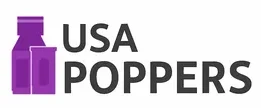No products in the cart.
Healthcare is a fundamental right, but for many in the LGBT community, accessing quality care can be a daunting challenge. Despite significant strides in recent years, there remain numerous barriers and issues that need addressing to ensure equitable healthcare for all.
Let’s take a closer look at the current state of healthcare access for the LGBT community in the USA and explore what the future might hold.
Current Issues in LGBT Healthcare Access
Discrimination and Stigma
One of the most significant barriers to healthcare for LGBT individuals is discrimination. Even with legal protections in place, many still face prejudice and bias from healthcare providers.
This discrimination can range from outright refusal of care to subtler forms of bias, such as insensitivity or lack of understanding about LGBT-specific health needs.
In a 2020 survey by the Center for American Progress, “nearly one in five LGBT adults avoided seeking medical care due to fear of discrimination.” This statistic is a stark reminder of the pervasive stigma that still exists in the healthcare system.
Lack of Provider Knowledge
Many healthcare providers lack adequate training and knowledge about LGBT health issues. This gap in understanding can lead to misdiagnoses, inappropriate treatments, and a general lack of trust between patients and providers.
For example, transgender individuals often face challenges in finding providers who are knowledgeable about hormone therapy and gender-affirming surgeries.
Mental Health Disparities
Mental health is another critical area where LGBT individuals often face disparities. Higher rates of depression, anxiety, and suicidal ideation are reported among LGBT populations compared to their heterosexual counterparts.
According to the Trevor Project’s 2021 National Survey on LGBTQ Youth Mental Health, “42% of LGBT youth seriously considered attempting suicide in the past year.”
Access to culturally competent mental health services is essential, yet many LGBT individuals struggle to find providers who understand their unique experiences and challenges.
Barriers to Healthcare Access
Insurance Coverage
Insurance can be a significant barrier to accessing healthcare for LGBT individuals. While the Affordable Care Act (ACA) has improved access to insurance for many, gaps remain. For instance, some insurance plans still exclude coverage for gender-affirming surgeries or other essential LGBT-specific healthcare services.
Geographic Disparities
Where you live can greatly impact your access to LGBT-friendly healthcare. In rural areas, finding a provider knowledgeable about LGBT health can be even more challenging.
This geographic disparity means that many LGBT individuals have to travel long distances to receive the care they need, which can be both time-consuming and expensive.
Future Directions for LGBT Healthcare
Enhancing Provider Education
One of the most critical steps toward improving healthcare for the LGBT community is enhancing provider education.
Medical schools and training programs need to incorporate comprehensive LGBT health curricula to ensure that future healthcare providers are well-equipped to meet the needs of all their patients. This education should cover a broad range of topics, from the specific health needs of different LGBT populations to best practices for creating inclusive and welcoming environments.
Policy Advocacy
Advocating for inclusive policies is essential for advancing LGBT healthcare. This includes pushing for the enforcement and expansion of non-discrimination protections in healthcare settings.
It also means advocating for insurance coverage that includes all necessary healthcare services for LGBT individuals, such as gender-affirming treatments and mental health services.
Community Health Programs
Community health programs tailored to the needs of LGBT individuals can play a crucial role in improving access to care. These programs can provide culturally competent care and create safe spaces for LGBT individuals to receive health services.
For example, LGBT community centres often offer health clinics that provide everything from HIV testing and prevention to mental health counselling.
Technological Solutions
Telehealth has emerged as a powerful tool for improving access to healthcare, especially during the COVID-19 pandemic. For LGBT individuals, telehealth can offer a way to receive care without the fear of discrimination or stigma. It also helps bridge the gap for those living in rural or underserved areas.
However, for telehealth to be effective, it must be inclusive. This means ensuring that telehealth platforms are accessible and that providers are trained to deliver culturally competent care through these platforms.
Final Thoughts
Improving healthcare access for the LGBT community requires a concerted effort from all of us.
Whether it’s advocating for policy changes, supporting community health programs, or simply educating ourselves and others about LGBT health issues, every action counts.
By working together, we can create a healthcare system that truly serves everyone, regardless of their sexual orientation or gender identity.
